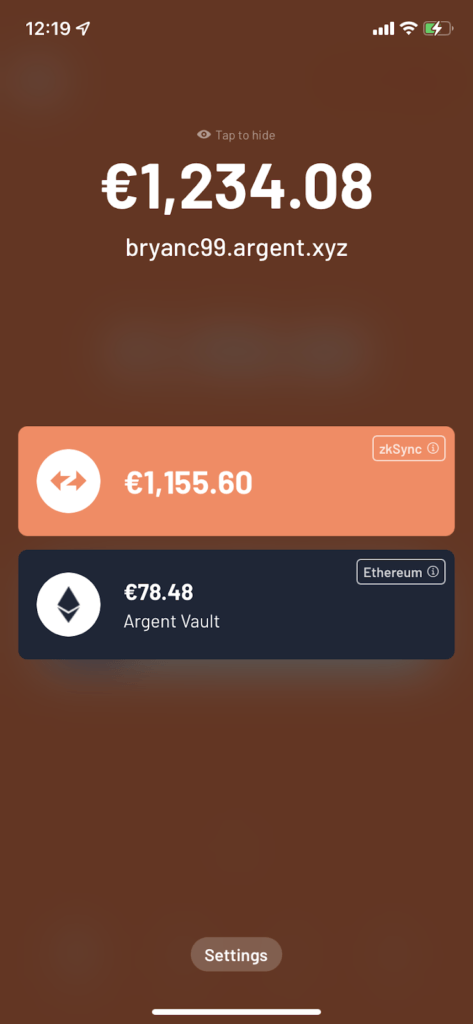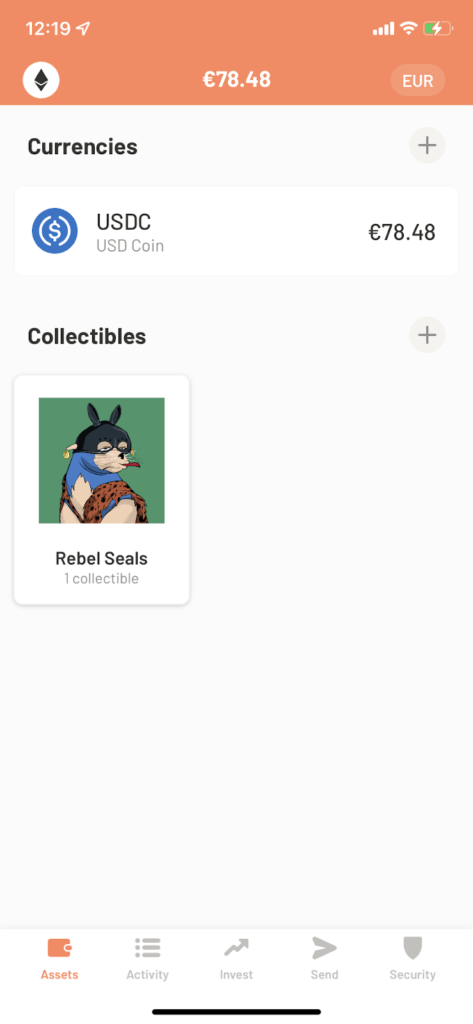Discover if Argent wallet is a good choice for storing your crypto and NFTs in this Argent wallet review.
A few months ago, I read about a planned airdrop of tokens for users of the zkSync Layer Two network. So, I bridged some Eth over to zkSync to potentially qualify for this airdrop.
Then, I started investigating crypto and NFT wallets built for Layer Two and came across Argent. It supports both Ethereum (Layer One) and zkSync (Layer Two) and claims cheaper fees. So I set up an Argent wallet to try it out for storing my crypto and NFTs.
Table of Contents
What Is Argent Wallet?
Argent is non-custodial crypto and NFT mobile wallet. It’s available on iOS and Android. Essentially, Argent wallet owner maintains custody over their crypto assets and NFTs rather than Argent. Argent also enables buying, selling, hodling, and staking crypto on Ethereum (Layer One) and zkSync (Layer Two).
The latter is a Layer Two Ethereum roll-up that sits on top of Ethereum. zkSync, much like other Layer Two solutions, is trying to solve the problem of scalability that Ethereum faces. It’s much faster and cheaper to use and interact with than Ethereum. For Argent users, this translates into cheaper crypto as gas fees are almost non-existent.

Argent provides users with a standard Ethereum wallet and a zkSync wallet. Don’t expect much if any NFTS on zkSync yet, but users can purchase and stake crypto without paying crazy gas fees.
The product launched in 2018 after a $12 million funding round led by Paradigm. A London-based startup, its wallet emerged from beta recently.
Read our guide to Layer One versus Layer Two.
Argent Vault and Argent zkSync
It only takes a few minutes to set up an Argent wallet. Then, users get access to Argent Vault and Argent zkSync.
The former is built on Ethereum Mainnet. So, if you’re buying or interacting with crypto, expect to incur Gwei fees. You can also use Argent Vault for buying and receiving NFTs via OpenSea and other marketplaces.
I paid approximately $50 to activate my Ethereum address. Next, I bought some Ethereum inside the app, and gas fees were almost non-existent.
Next, I set up my zkSync wallet inside of Argent. I transferred some WBTC into zkSync and deposited it inside some DeFi yield-bearing products inside of Argent.
Transferring Crypto Into Argent
Users can buy crypto via the Argent Vault or via zkSync. It supports Apple Pay or a credit card. Payments are handled by Ramp. The app also provides users with an address accessible via a web browser. You can use this to transfer funds into your zkSync wallet via a credit or debit card. It follows this format: yourargentusername.argent.XYZ
Alternatively, users can use the zkSycn.io site to bridge funds over from Ethereum mainnet and then transfer to Argent. I also did this to qualify for a potential airdrop from zkSync.
zkSync enables users to load up with crypto via several payments providers including Ramp and Orbiter. To get the most value from Argent, users should bridge some funds using one of these options. It’s relatively easy to send funds out of the app, depending on a user’s security settings.
Argent Assets
Once users have funds inside their Argent wallets, they can buy or trade for dozens of supported crypto assets. These include:
- Wrapped Bitcoin (WBTC)
- Ethereum (WETH)
- Tether (UDST)
- Chainlink (LINK)
- Crypto.com Coin (CRO)
- USD Coin (USDC)
- Maker (MKR)
- Basic Attention Token (BAT)
- Multi-collateral DAI (DAI)
DeFi Protocols
Users can stake Eth inside of Argent. It also supports several DeFi protocols inside of the app, on Ethereum. These include:
- Aave
- Balancer
- Compound
- Dai Savings Rate
- Kyber token exchange
- PoolTogether
- Social TokenSets
- Robo TokenSets
- Uniswap V2 liquidity
On zkSync, users can invest in several different DeFi protocols powered by Aave, Yearn, and Gro.
The Argent NFT Wallet

Using OpenSea, I transferred my NFT into my Argent Vault address. I was able to see the NFT inside of Argent and some of its metadata. It struck me as a nice alternative to use Metamask for NFTs, in that an Argent wallet is somewhat less susceptible to social engineering hacks.
Unfortunately, it’s not possible to buy an NFT with Argent on OpenSea via a desktop yet. If you want to buy NFTs directly on OpenSea using an Argent wallet, it is mobile-only. Follow these steps:
- Log in to OpenSea using Wallet Connect on your mobile device
- Select Argent
- Follow the prompt to connect your Argent wallet to OpenSea
Usability
The design of the Argent app is relatively straightforward and akin to most crypto apps. It’s fast and snappy. Each button, service and action has a brief explanation.
I spent a few minutes figuring out what was my zkSync wallet versus my Ethereum wallet inside of the app. I only realized the difference when I noticed the gas fees for using Ethereum inside the app. It turns out I only had to click on my wallet icon to switch between Ethereum and zkSync.
Security
Argent enables self-custody of crypto and NFTs, but it doesn’t rely on the traditional method of passwords, seed phrases and recovery phrases.
Access to the wallet is protected by the latest security features of iOS and Android, that is facial recognition or biometric IDs.
It uses multi-signature security for securing crypto. Essentially, users set up verified guardians or individuals who manually approve transactions. They can also lock wallets remotely and approve the recovery of a lost wallet.
Users can elect to use a third-party service or a traditional hardware wallet in lieu of a real person. They can also add trusted blockchain addresses within the app.
In short, you could store crypto and NFTs in Argent and set your spouse or partner up as a guardian. That way, they can access your crypto and NFTS even if you lose access.
Argent Competitors
Argent is a little like a decentralized version of centralized wallet services like Blockfi and Nexo. You can also use those apps to stake crypto and earn rewards, although support for NFTS is much more limited. That said, the user experience on Nexo and BlockFi is more polished than with Argent.
However, Argent differs from these centralized wallets in that you maintain full ownership or custody over your assets rather than a traditional company.
Argent Wallet Review: The Final Word
Many casual crypto buyers will probably default to a traditional wallet or service, despite the fees, instead of learning about roll-ups and Layer two solutions. That’s a problem with the wider crypto space. Argent is attempting to solve that problem.
It’s avsurprisingly good crypto and NFT app. Recently out of beta, support for zkSync means users can buy and manage crypto faster and cheaper than on Ethereum mainnet. However, it took some time to figure out the differences between these technical concepts and standards. I intend to continue using this wallet as a MetaMask alternative, but not a replacement. That’s because Metamask works better on a desktop.

